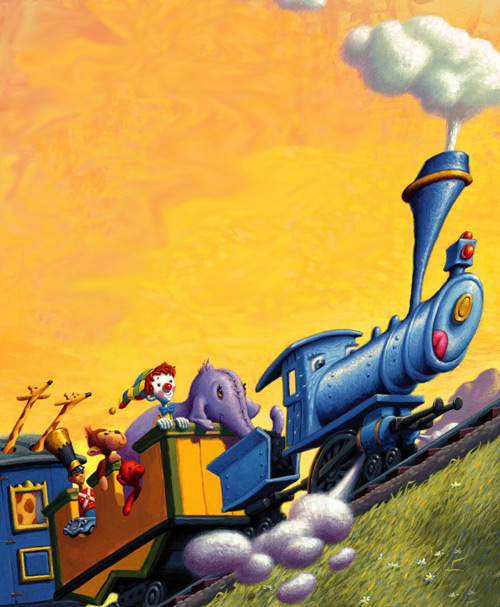
Many magazine brands put a ton of resources into creating articles and content for their print editions, but don’t put comparable effort in formatting them for online readers or marketing them further on the web.
This month, I was able to work with Library Journal and other members of RB Interactive on a little experiment; we put a strategy around one of their biggest yearly features: their salary and placements survey, which comes out each October. Three goals for this project:
- Increase page views to one of their most popular features.
- Create a more engaging user experience.
- Better leverage resources: create new products and better performance from work already done in print.
First, let’s compare last year’s article treatment to this year’s:

For 2007, a 3,500 word article was posted as a single page… simply dumping the words onto the web. For 2008, the article was split up into sections, with an “article homepage” linking them all together. The result:
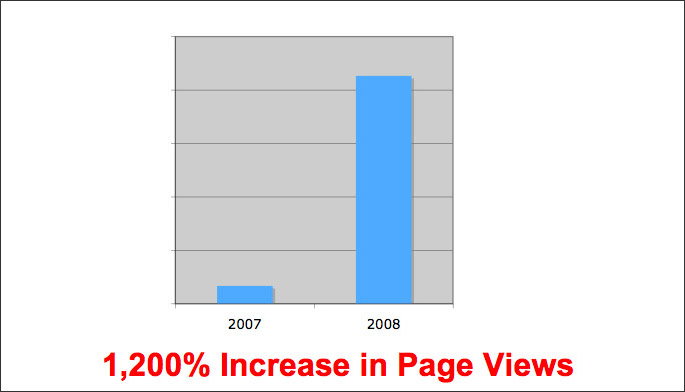
(That is for the time period of Oct 15-28 for each year.)
Put another way: this years article received more page views in 2 weeks, than last year’s article did in 12 months. A LOT more.
Here’s a look at some differences between the two:

One big change this year: the art director at LJ created 15 web exclusive graphics that accompanied the articles and were used for promotion on the homepage and in newsletters:
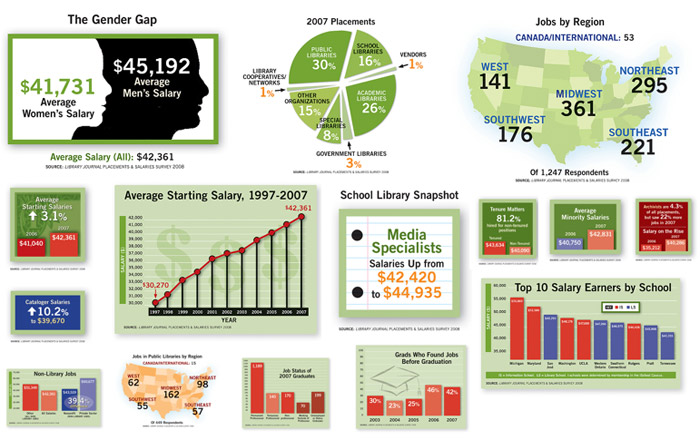
Another change was the addition of in-page navigation, that encouraged readers to keep clicking and exploring other parts of the article:
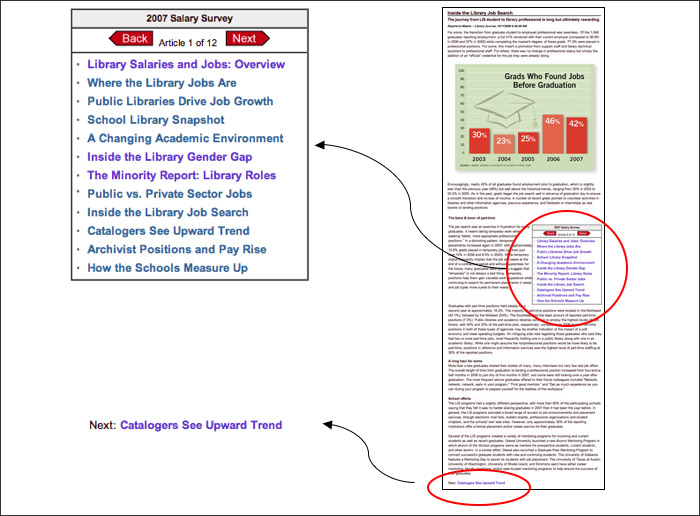
They also sent out a special newsletter that promoted only this feature, which is often a much anticipated article:
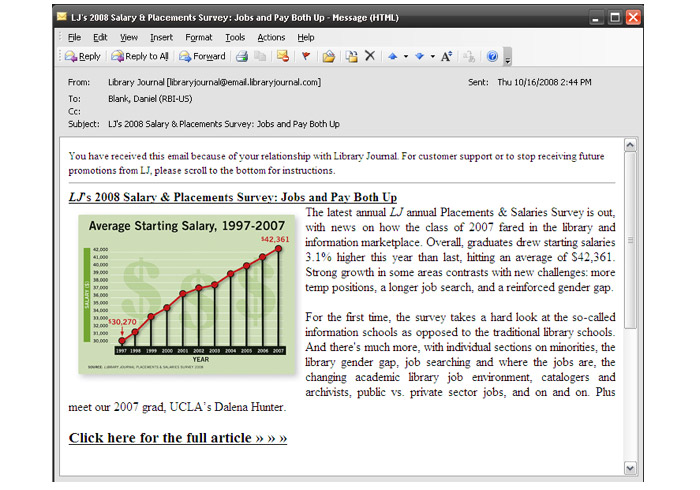
This is the process that the teams at Library Journal and RB Interactive took:
- Received article from writer
- LJ editor segmented sections and created a web exclusive overview article
- Sent to SEO expert for recommendations on keywords
- Created headlines for each section, using keywords
- Created article homepage layout
- Sent graphics recommendations to art director
- Loaded content, then customized, looking to make many parts feel like a single whole
- Created in-article navigation
- Launched feature to coincide with print edition (as usual)
- Sent special newsletter promoting the feature
- Created follow-up story 2 weeks later with feedback on original article
- Reviewed metrics to understand further opportunities
For all the effort and success, there are still a ton of opportunities for improvement:
- Content:
- Rewrite the article for the web – make it easier to scan and digest.
- Use keywords more strategically within articles and links, not just headlines.
- Better display of tables from print edition.
- More follow up articles that include feedback from their readers and from elsewhere on the web. Create conversations.
- Create a linking strategy across existing LJ content, and to external websites.
- Marketing:
- Track clicks from newsletters.
- Plan how this will be shared and promoted on other websites/blogs. Focus on inbound links and social media.
- After a big bump in the beginning, interest falls. Need to create a marketing plan spread across the month – teasers, new articles or graphics that leverage feedback they receive, and extend these efforts to new products such as webcasts.
- Sales:
- Work with sales team from day 1 on the value of this content, and how it can be best leveraged and sold against.
- Create sponsorable new products from this base, such as webcasts.
- Production:
- Leverage web analytics more proactively: not just “how did we do,” but “what can we learn.”
- Evolve how we correlate our actions to what we see in the metrics. Still have a lot to learn here.
- Integrate into RBI landing page process, which better leverages SEO.
And here are a few lessons I can find so far:
- Don’t treat your print content like an “also-ran” online.
- Focus on the user experience: make the content scannable, break it up into digestable chunks, create compelling online graphics, and create a linking strategy.
- Google seems to be the only search engine that matters; at least that is who drove the most search traffic in the first two weeks…. by a wide margin.
- Create more entry points to featured content.
- Consider the single action you would like readers to take on each page.
- Create STRATEGIES, not just tactics (such as adding links or images) for the following:
- Content
- Marketing
- Sales
Thanks to the Library Journal team and RB Interactive team for all the hard work in making this project a success!
